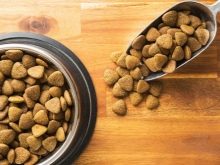Features of Purina Dog Chow puppy food
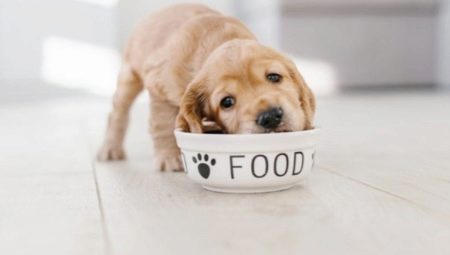
Specialists classify Dog Chow dog food as a premium class. It is produced by a fairly well-known company in most countries of the world called Purina, which produces different types of rations for pets.
In the lines of this manufacturer, you can easily find products for dogs of all breeds of any age group. Particular attention to this food should be paid to those who have a small puppy at home and who are puzzled to find the most successful variation of the daily diet for him.
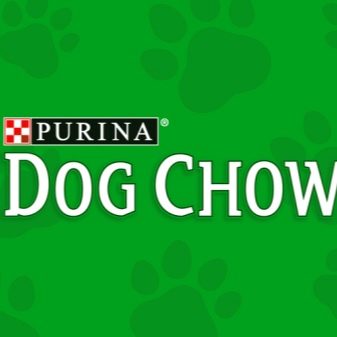
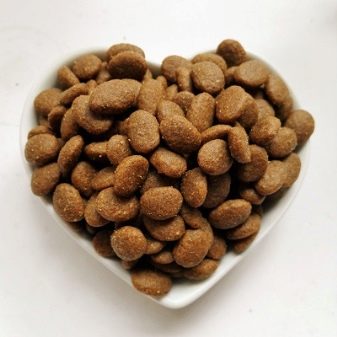
general description
One of the main features of Purina Dog Chow is the different dry granule sizes that other foods do not. These granules can be quite small, can be of medium size and are quite large. The dog will not only quickly swallow them, saturating, but will also have to chew the granules thoroughly, thereby actively developing its own jaws and qualitatively cleaning plaque from the teeth.
The diet includes chicory, which is a natural source of probiotic. It allows you to increase the number of beneficial bacteria in the canine intestine, thereby helping to normalize the digestive system.
30 days after you start feeding this diet, the number of beneficial bacteria and bifidobacteria will increase almost 100 times, which means your dog is guaranteed healthy digestion.
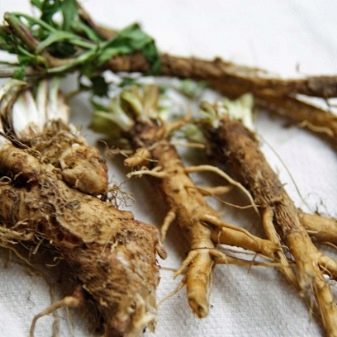
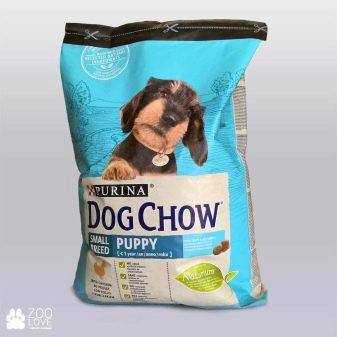
Dog Chow products can be divided into 3 main series:
- for small puppies;
- for adults who have reached the age of 1 year and older;
- for elderly pets over 7-9 years old.
The main positives of Purina Dog Chow for the smallest pets include:
- affordable feed price for ordinary consumers;
- widespread - you can buy a dry diet not only in pet stores, but also in ordinary markets;
- a wide selection of products from the manufacturer is presented on almost all Internet sites that sell goods for pets;
- the presence of additives in the form of a whole range of useful vitamins and various minerals;
- a decent assortment of food, where every pet owner can easily choose products in accordance with the age parameters and size of their animal.
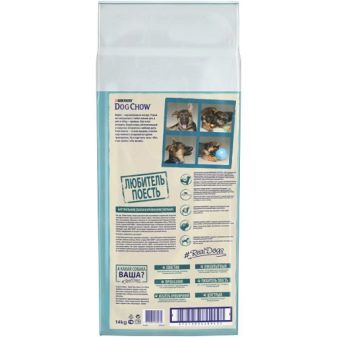
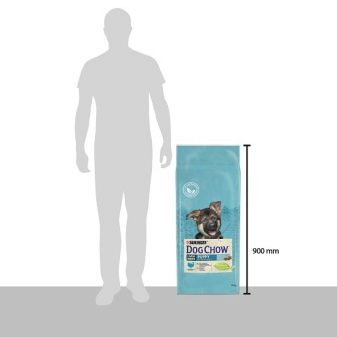
The main disadvantages of Dog Chow food:
- the composition of the product is very scarce and presented not quite accurately, it is not very clear which meat products were used as a source of protein, nothing is said about the origin of the oils and fats contained in the composition;
- antioxidants are indicated in the list of foods included in the diet, but at the same time it is not indicated which ones;
- vegetables are present in the feed, but, unfortunately, there are not as many of them as it should be (there is only chicory root and a little dry beets);
- according to experts, the list of available vitamins and minerals could be much more impressive, also there are no glucosamine and chondroitin in the product, and they are extremely important for pets weighing more than 25 kg;
- It should be noted that in the composition of the diet, cereals are put on the first place, and not components containing protein, although they are considered much more important for proper and nutritious nutrition of animals.
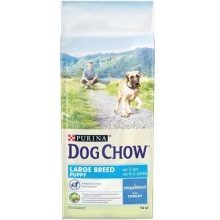
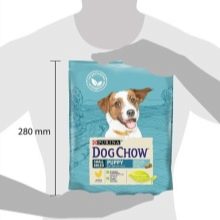

Range
The diets for the smallest in age dogs (up to 1 year old) are called Puppy and differ separately for puppies in the developed composition: there will be a fairly high content of vitamins.
The complete food series for toddlers includes food for small dog breeds, as well as fairly large and medium breeds.
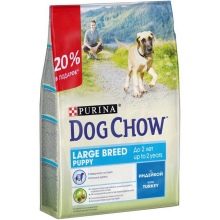
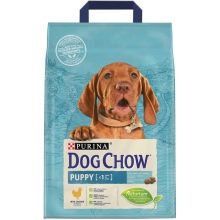
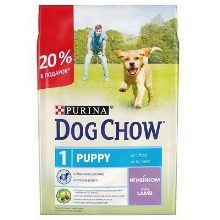
Purina Dog Chow nutrition for puppies from the age of 2 months to 1 year is divided into lines.
- For puppies of the largest breeds (the composition contains turkey meat). It also contains about 28% protein components, 12% fats, 2-3% fiber, in addition, chicory root and dried beets. This product helps to maintain the health of the pet's gums, helps to strengthen its immunity, and normalizes problem digestion. Great for feeding very large puppies up to 2 years of age. In the feed, the percentage of protein is significantly increased - 28%, there are a lot of different vitamins to get the best physical condition of a large baby during the period of active growth of his body.
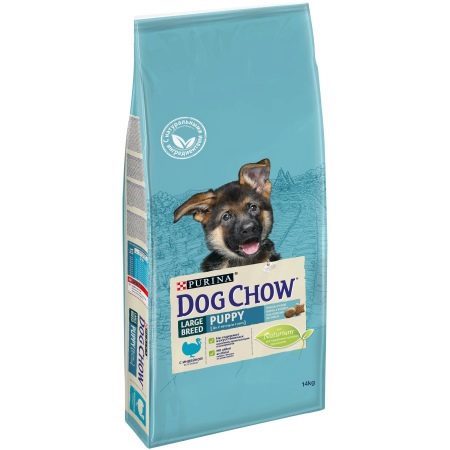
- For babies of small and medium breeds (there is chicken in the composition). It contains 29% proteins, 15-17% fats and 3-5% fiber. This diet will ensure fast and healthy growth of pets weighing no more than 12 kg.
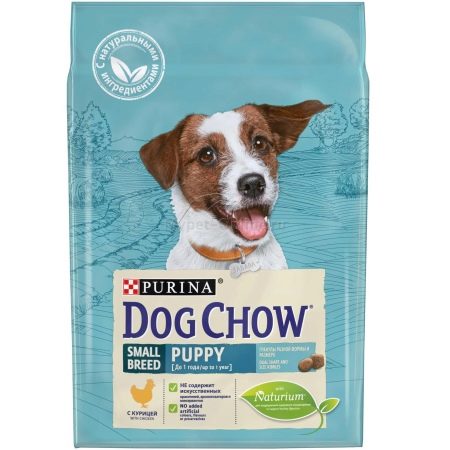
- For puppies of any breed weighing up to 10 kg (with lamb). It contains 28% proteins, 14-15% fats and 2-3% fiber. Differs in a balanced amount of different vitamins and useful microelements, which will contribute to the development of the dog's skeleton and build muscle mass, and in addition, will give your dog a shiny and beautiful coat. The diet can be used without problems for feeding puppies under 1 year old, as well as for feeding pregnant dogs and lactating bitches. Many dog owners speak positively of this line when feeding very small breed adult dogs. The diet also contains vitamin E - to protect the animal's immune system, a probiotic (chicory) to improve the quality of digestion, a very useful Omega-3 acid - for the full development of vision and the brain of a four-legged friend.
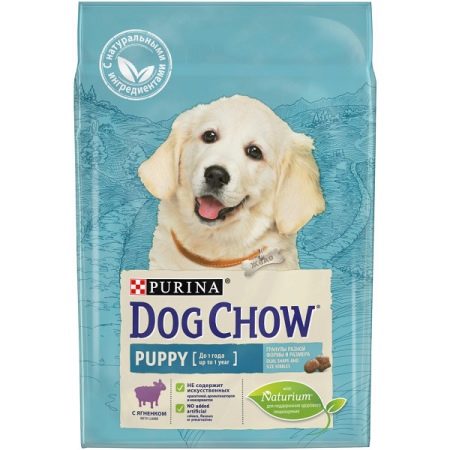
- Dry food for puppies of all breeds (with chicken). Contains approximately 28% protein, 14-15% fat and 2-3% fiber. Experts recommend using it for feeding young dogs weighing no more than 10 kg. The food will help puppies to reach adult parameters at an accelerated rate, will create a strong skeleton, and guarantee the right calorie levels and gum hygiene.
If your pet likes the food, you can always purchase it in 14 kg packages.

The nuances of feeding
There are separate feeding norms for puppies and adult animals, which must be fully observed. Their constant violation can lead to serious disruptions in the work of the dog's body, overeating can cause problems with the gastrointestinal tract. Puppies are usually given complementary foods starting at 6 weeks after birth, with daily dosages increasing every 2 months until the puppies are 1 year old. After that, you need to feed a small pet according to quite adult standards. In addition, you should know that up to 3 months of age, babies need to be fed with wet food about 3-4 times a day. As soon as the puppy grows to the age of 3 months, the amount of wet food is reduced, but at the same time the puppy is well fed three times a day.
At the age of 6 to 12 months, you can switch to feeding 2 times a day. Be sure to adhere to these norms and in no case overfeed your baby, so that in the process of active growth, your pet always remains in optimal shape. If the baby weighs 5-12 kg, then the norm of his nutrition per day will be about 100-200 g, and if the puppy is highly active -120-240 g, if the pet weighs 12-25 kg, then the normal consumption rate is 220-350 g, and highly active individuals need to be fed in portions, the size of which is 250-440 g.
The puppy should always have access to a bowl of clean drinking water.
